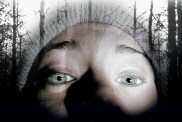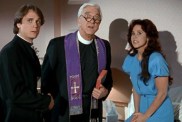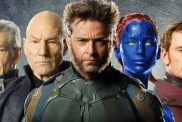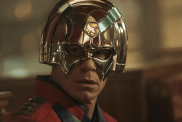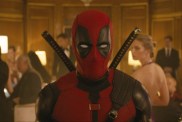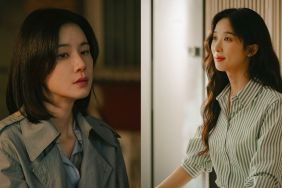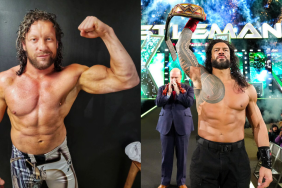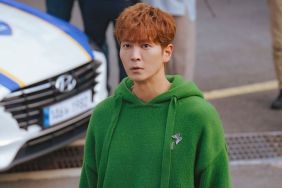
This week, Shock was called to 20th Century Fox and treated to a series of clips from the upcoming film, hosted by Trank and Fox creative exec Steve Asbell.
Chronicle tells of three high school students (actors Alex Russell, Dane DeHaan and Michael B. Jordan) who, one evening, discover a hole in the earth. Exposure to whatever it is that made said hole (those details are not being given yet) grants them extraordinary telekinetic powers that get stronger as they use them. As the story goes on, the misfit of the group, Andrew (DeHaan), apparently taps into his dark side and things take a sour turn.
As one scene showed, Andrew robs a gas station, knocking out the attendant without throwing a fist and extracts all of the cash registers money – without using his hands. And because Chronicle uses the found footage narrative technique, you have to ask: Who is filming Andrew rob this gas station? The answer is simple, he is by using his telekinetic abilities to hold the camera aloft and follow him around.
This clever little detail is just one of the many things about the Chronicle presentation that impressed us. The scope was surprising. The clips shown were a smattering of story points from the first, second and third acts and by the time we were given a glimpse at the finale, it was full of crashing helicopters, cars soaring into the air and a hair-raising perspective from the top of Seattle, Washingtons Space Needle. Thats a far cry from some of the earlier scenes we saw which found the main characters using their abilities to use a leaf blower to lift up skirts, jab forks at one another and even fly.
Id prefer to leave the real analysis of the film until it is released and seen in whole, but for now Ill say damn, I didnt see this one coming.
Following the clip show, Trank sat down with Asbell to discuss the film.
To give you a brief history of the project not touched on below, Trank and writer Max Landis developed Chronicle. When it landed in the hands of Fox, Trank presented the studios execs with a directors statement and a short film, an amusing sequence set at a party where two quarreling teens get into a lightsaber battle until the Stormtroopers show up. The whole thing is told from the perspective of a video camera, so theres a raw feeling to it that works.
That said, here is the Q&A that followed

Joshua Trank: As far as the modern teenage experience, this movie plays wish fulfillment without any cynicism attached to it. We have these scenes with our main characters out there doing things and theyre doing it without any shame. Its not age-based or generational. If these kids were in their 20s, I think theyd be doing the same thing theyre doing here. I wanted to shoot all of these scenes with these actors and keep everyone in the present and in the moment, without doing filmmaker techniques where you overtly foreshadow or try to imply things about the story or theme and just let this play out naturally.
How did this wind up at Fox as opposed to Fox Searchlight or on the indie film scene?
Trank: When I thought of this, I knew that it had qualities of an indie movie because most of the scenes play out with an understated narrative drive. The quiet moments connect the bigger moments. But at the same time, it has this big blockbuster scope. I thought it would be the ultimate cool challenge to do this film inside the studio system. Max [Landis] and I had our own separate reps and it went out to a whole bunch of people. We got the call from [producers] Adam Schroder, John Davis and Steve Asbell. Max and I went into the studio, met everybody and walked out like, f**k. It was amazing and surreal and its still surreal. This was our opportunity to make a movie here at Fox.
Did it allow you to open up the scope of the film?
Trank: I imagine so. Certainly for the ambition of what we were trying to accomplish. We were working with a very, very tight budget. But I think youre going to find that anywhere. The main thing is in studios, theres usually a chance the film is going to be distributed as opposed to with the indie route, its a lot more vague. I did this film called Big Fan with my friend Rob Siegel and it was $100 thousand out of Robs pocket and two and a half years working on it. It went to Sundance and we waited for distribution. After that experience, I was like we just have to make sure this movie is going to get released. Thats the biggest thing.
Talk about the prep work and the dynamic you had with the actors
Trank: We wanted to, with every scene, there was this fine balance. Our three main actors are well-trained, experienced young actors who brought a level of discipline to this and I think, for the first time, they were being asked to not always hit their marks and improve a little bit and just be a bit more loose and have fun with the scene so the performance part doesnt come across so slick. The trickiest part is I do a lot of takes and there are certain beats I want everybody to fall on in certain scenes. Sometimes I would only tell Alex something or I would only tell Dane something to see how it would play out. So it was about the repetition and finding those happy accidents until someone told me we had to move on. [laughs] That was the biggest challenge in the tight schedule, too. Also, I would do a lot of storyboarding. Even in planning these scenes that appear to be fully improvised, there is a very specific plan in every scene. Lots of rehearsal, training and planning to make it look like it was just an accident.

Trank: I grew up in the 90s, loved Nirvana [laughs] It was originally set in Portland. Any place that has seasons, I find fascinating, because I grew up in Los Angeles. Ive always been fascinated by the Pacific Northwest, so Max and I decided to set it there. When we were developing it internally, Steve said
Steve Asbell: Anywhere by New York or Los Angeles, I think weve done enough damage there.
Trank: We were trying to think about a city that has something science fiction about it. Other than some random movie in the 70s where John Wayne plays a cop in Seattle, I couldnt think of any other movie that was set there, so we were all very excited about it and the set piece we showed you a clip of.
When you were conceiving the story, did it always go hand-in-hand with the found footage approach or did that narrative technique come into play later?
Trank: It started out as a found footage idea because I really wanted to shoot a story that is almost a no-no of found footage. How are you going to go cinematic with this kind of invention? If you had a character that is really visually gifted and can operate his camera telekinetically then, wow, theres a movie there. What would that look like if the camera was following me around that way?
Where does the title come from?
Trank: I thought what is this movie, really? I was thinking about the themes and its kind of a journal, this character is chronicling this. Chronicle just seemed cool and mysterious. It has so much to do with the themes of the film that it definitely needed to be called Chronicle.
Asbell: When the title was on the cover of memos, people thought we were doing another Chronicles of Narnia, which was not the case. [laughs]
Whats your take on the superhero films today?
Trank: Theyre always evolving. Back to Superman up until The Avengers and Dark Knight and this movies coming out this year, theres always surprises. I think its a filmmaker thing. You get an interesting filmmaker to do a take on characters you loved growing up and I think its always this cool gamble. Im always for it.
Whats the relationship between the two characters in the film Andrew and Matt?
Trank: Theyre cousins. They have that relationship where Andrew, hes, I hate to use the term, a loner and his cousin is the polar opposite. Very relaxed, calm and confident. Matt both loves him as a cousin and is annoyed by him. Theres a lot of depth to that relationship we show in the movie that is central to everything that unfolds.

Trank: We shot the film in South Africa, the whole movie. We met up with this real genius named Simon Hansen and he was a friend of Neill Blomkamp, we had just met him on an interview with local visual FX guys down there. Simon came in and talked about his approach and the way I wanted to do things was keep everything as practical as possible, avoid green screen, shoot even when we do compositing real live plates and not create anything digitally. Simon knew how to do all of that. They were pioneers with FX, just real-looking stuff. We collaborated with Simon, brought on a couple of FX companies and just looked at every scene and how to avoid digital as much as possible. When Andrew knocks a car through a guard rail, that was all timing. We had a real stunt driver in a truck, so we shot in the car looking through the rear window. Then we timed cues when he swipes his hand across. And we had a marker with a paper-thin guard rail for the truck to go through. It was a bit difficult for our rotoscopers in some scenes because they would have to remove people. At the end of the movie we have these big scenes where cars are lifting up and on the Space Needle. Obviously, thats not Seattle and were not in the car, but those are big scenes and the money we had needed to go to those scenes.
Are there plans to continue the story of Chronicle? Sequel ideas?
Asbell: Both Josh and Max have a much bigger story involved with this that delves into the mystery of what happens to these characters. This film is about these kids and it has the potential for more. They told me a little bit about it and its awesome, but this film feels like its own piece. Its a really good movie.
Trank: Thank you.
